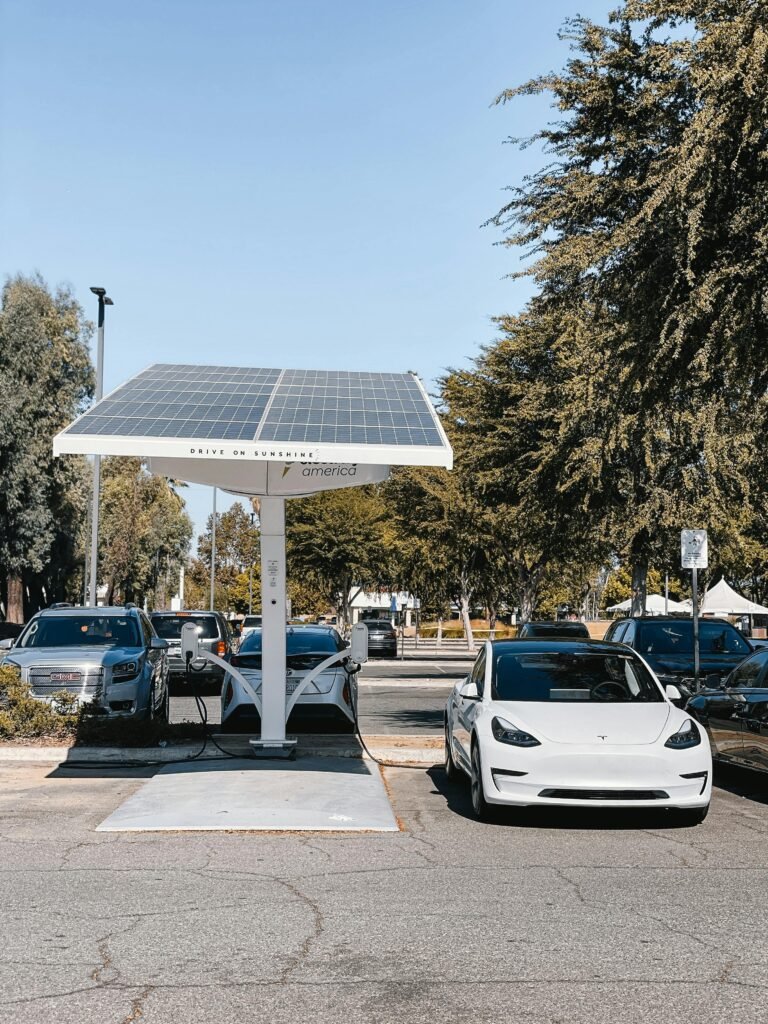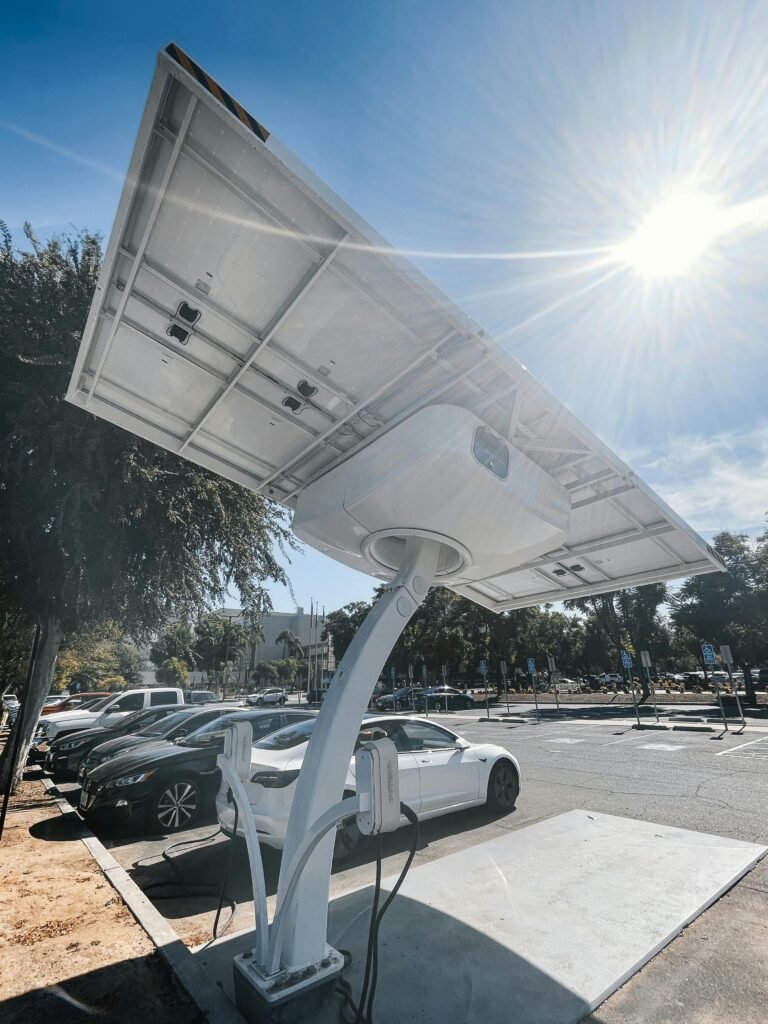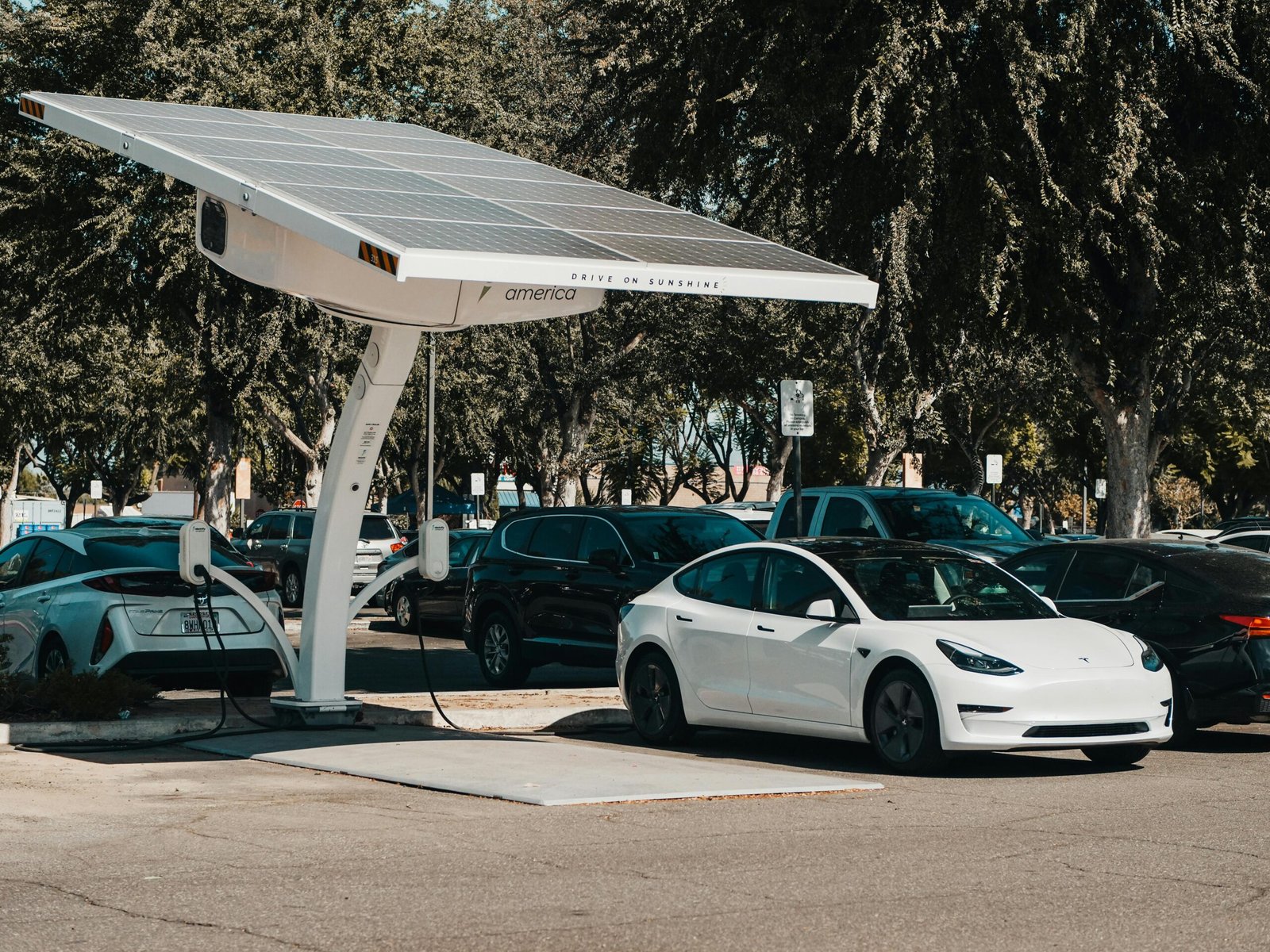Table of Contents
Solar Powered Car
For engineers and environmentalists, along with futurists, the idea of solar-powered automobiles represents a long-time fascination. Clean transport advancement along with electric vehicles (EVs) growth leads to an increasing concern about this one pressing question: Are solar-powered cars the future?
The development of solar energy and automotive technology stands high but solving this matter remains difficult to achieve. We will explore how solar-powered vehicles got better along with their remaining difficulties while assessing their realistic potential for the future.
The Dream: Cars That Drive on Sunshine
Such vehicles exist nowadays with the capability to generate power when resting at your home or during urban travel and while sitting on the street. The solution eliminates the need to wait during vehicle charging sessions. No more worrying about electricity bills. Solar cars prove to be sustainable by eliminating environmental impacts and enabling total energy autonomy, which addresses both major modern transportation challenges of sustainability and convenience.
A solar-powered vehicle obtains electricity from sun exposure that exists on its roof as well as its hood and other structural components. The electricity either directly charges the vehicle battery or adds additional driving distance to the car. Under theoretical conditions, the sun can supply enough power for brief daily travels that would prevent any need for charging.

Current Progress: From Concept to Reality
Theoretical concepts about this idea have developed into an actual functional reality. Various projects based on sketches have transformed into operational prototypes.
- Hybrid cars using solar roofs achieve minimal increases in their battery operating range.
- Prototype vehicles with full solar power supplies have appeared, making them capable of achieving daily driving ranges between 10 and 40 kilometers.
- Current startup companies remain committed to developing commercial solar-powered vehicles that provide dependable solar-generated energy for daily use.
- People with daily commutes requiring less than 64 kilometers of range can experience full coverage from the correct implementation of solar panels on electric cars operating in sunny climates.
The application of solar technology on delivery trucks and trailers by industries improves commercial transport efficiency.
Challenges Holding Solar Cars Back
Progressive advancements have occurred in solar-powered car development but realistic barriers impede the path to completely solar-powered automobiles.
Limited Surface Area
Car dimensions create constraints that prevent the installation of adequate solar array systems. The power generation from photovoltaic cells in present-day technology remains average even when using their optimal rates over a car’s dimensions. Big vehicles such as buses and trucks possess enough space for the installation of complete solar system technology.
Weather and Geographic Dependence
The quality of solar energy output depends directly on prevailing weather patterns. Strong daylight as well as snow and heavy rain, together with shaded parking areas, severely decrease the solar power output. Regions with lengthy cold winters having reduced sun exposure levels create difficulty for solar-powered vehicles to stay independent regarding power sources.
Efficiency and Cost Barriers
The complete system comprising solar panels with batteries together with their power management systems raises total costs. Most solar vehicles exist as partially independent vehicles because their current efficiency standards force them to depend on grid electricity for power.
Fragility and Maintenance
Mobile car-mounted solar panels require higher durability than static rooftop solar panels because they need to resist road vibrations as well as debris impact and weather conditions in addition to extreme temperatures. Making vehicles durable while keeping maintenance expenses low represents a principal engineering obstacle.
Opportunities That Keep the Dream Alive
- Solar-powered vehicles deliver numerous benefits that encourage technological improvement in the field of EV transportation.
- Solar power systems function as additional energy sources, although not the primary power supply, because they decrease the need for grid charging occurrences.
- The absence of proper charging infrastructure in isolated locations enables solar energy to serve as vital backup energy.
- Solar integration with EVs eases the strain added to power grids from the growing EV market.
- Environmental cleanliness increases as the need to use coal or natural gas for electricity production decreases.
Technological advances in solar panel efficiency combined with cost reductions will produce a substantial change in how advantages and drawbacks relate to one another.

What’s Next for Solar-Powered Cars?
The following evolution of solar-powered automobiles will unite innovative designs together with enhanced technology advancements.
- Lightweight solar materials designed for flexible applications will allow car manufacturers to easily build solar cells into vehicle exteriors with an unchanged look.
- The combination of multi-layer and perovskite solar cells presents enormous potential to increase energy conversion capabilities.
- Vehicles with smart grid connectivity will have the capability to both recharge and send unused electricity to residential homes or to the power network.
- The integration of conventional plug-in technology with solar energy harvesting systems through hybrid solar-EV designs will become widespread for delivering reliable annual performance.
The core solar power technologies developed for fully solar cars will become prevalent in future electric vehicle models, while those vehicles themselves will only reach limited adoption as specific region and purpose vehicles.

Conclusion
Solar-powered cars will eventually play a significant role in future mobility but they will not take over roads globally within the near term. Solar vehicles will not entirely replace conventional electric vehicles at present, though they will expand as solar technology, sustainable design, and energy storage systems become progressively better.
Vehicle energy systems will include solar power as a standard component through their development towards cleaner methods of driving and automated control systems. Solar energy remains in motion today either to expand EV battery capacity or create emergency backup power and drive lightweight electric vehicles.
The Solar powered automobile continues to inspire future drivers as scientists make it available for regular use.



